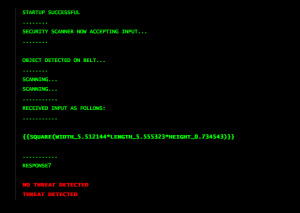
http://www.andrew.cmu.edu/user/kpmcinto/faulty.html
Description: In Faulty, you play as a piece of security machinery whose threat-recognition software is malfunctioning. As a computer you cannot sense anything beyond what is placed in front of your scanner, you cannot ask for clarification, and you cannot make choices outside of those you were programmed to make. You can however attempt to use your limited sentience to correctly identify objects whose dimensions are scanned in, and try to avoid the scrap heap, or deliberately let in objects that could be threatening to cause havoc in the building.